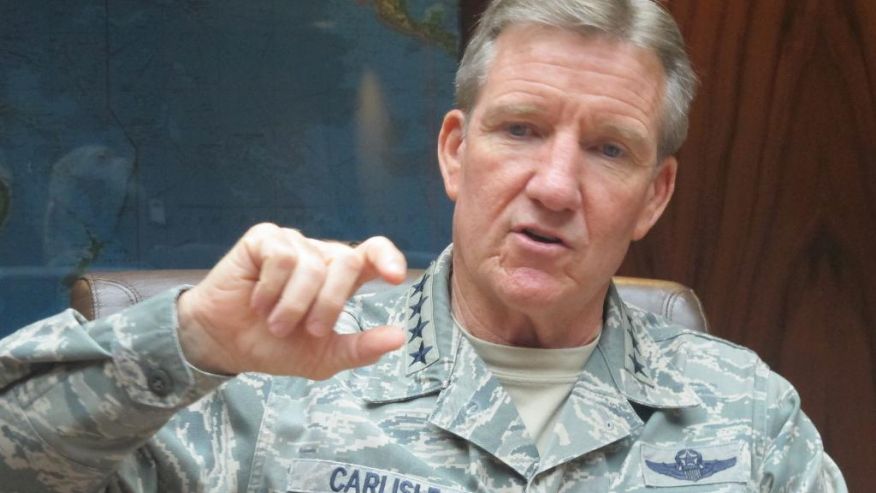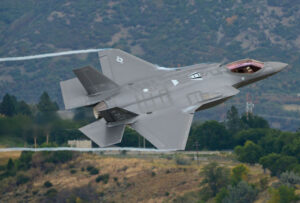Drones Do Excellent Urban Close Air Support; Mideast F-35A Deployment In Several Years
Posted on

WASHINGTON: If Congress was skeptical of bombers and fighters doing Close Air Support, how will they react to MQ-9s doing the toughest CAS mission around — taking out targets in the close confines of an urban fight?
Gen. Hawk Carlisle, the soon-to-retire head of Air Combat Command, told reporters this morning that the Reaper is performing urban missions and doing a very fine job of it too. I understand there are videos of Hellfire missiles fired by Reapers snaking through an urban environment, heading through a window or door, exploding and leaving the structure intact (though it may not be very safe). While there have been isolated mentions of the Reaper performing CAS missions in Iraq and Syria, none have mentioned urban CAS operations, the most complex and difficult to perform given the difficulty of identifying targets, causing as little damage to homes and businesses as possible and killing as few innocents as humanly possible.

F-35A
I’m sure most lawmakers who insisted on retaining the A-10 Warthog, beloved for its ugliness, titanium tub and the reassuring sound of its cannon destroying nearby enemy troops, did so because they honestly believe it simply does the mission better than F-15s, F-16s B-1s, B-2s or F-18s. But those who followed the debate between the Air Force, eager to retire the A-10 fleet and save several billion dollars, and lawmakers know that Sen. John McCain was extremely skeptical: “You’re throwing in the B-1 bomber as a close air support weapon to replace the A-10. This is the reason why there is … such incredible skepticism here in the Congress.” However, the B-1 has been a CAS weapon since 2001. The enormous and increasingly ancient B-52 has flown CAS missions since 1967.
On a very different issue, Carlisle walked back earlier indications from senior Air Force officials that the F-35As would head to the Middle East relatively soon. Instead, he told reporters at what was his last Defense Writers Group breakfast, that the aircraft would not perform operations there for several years. The first squadron of F-35As would go to Europe in the next few months for a relatively short deployment to be followed by a longer deployment to the Pacific. “We are still working our way through that,” Carlisle said. He mentioned the Marines’ F-35Bs at Iwakuni, Japan but was not categoric in saying the Air Force planes would go there.
At the end of the breakfast, the general made a point of thanking the reporters present for doing our jobs. “You guys are great Americans doing the right thing,” he said. He said reporters help the military tell its story, something he conceded it often doesn’t do a very good job of. Most gratifying to this reporter was this comment: “Thank you very much for your candid feedback.” Some were struck by the distance between his comments about the press and those of our commander in chief. Hawk retires on March 10.
Subscribe to our newsletter
Promotions, new products and sales. Directly to your inbox.
